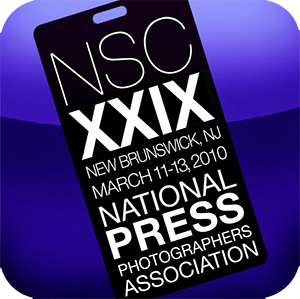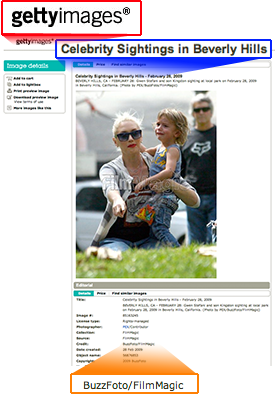 "Fair Use" when it comes to copyrighted works gets tossed around by so many people often trying to hide behind it so as to not have to pay for use when they should, or because they were too lazy to find the owner (or, to be fair, couldn't, and decided to do it anyway.) Public Knowledge held the first World's Fair Use Day back in January (more here) and PC World (here) cited participants of that event as having said "...U.S. copyright law should be updated to better reflect the changing ways that mashup artists and other new content creators use existing works," seemingly suggesting as a premise that, somehow, these mash-up artists had the right to create derivative works from a copyrighted work without the originating creators' permission. So, I thought this might be a good opportunity to ask the Executive Director of The Copyright Alliance, Patrick Ross, to share his thoughts in this guest post.
"Fair Use" when it comes to copyrighted works gets tossed around by so many people often trying to hide behind it so as to not have to pay for use when they should, or because they were too lazy to find the owner (or, to be fair, couldn't, and decided to do it anyway.) Public Knowledge held the first World's Fair Use Day back in January (more here) and PC World (here) cited participants of that event as having said "...U.S. copyright law should be updated to better reflect the changing ways that mashup artists and other new content creators use existing works," seemingly suggesting as a premise that, somehow, these mash-up artists had the right to create derivative works from a copyrighted work without the originating creators' permission. So, I thought this might be a good opportunity to ask the Executive Director of The Copyright Alliance, Patrick Ross, to share his thoughts in this guest post.
By Patrick Ross, Executive Director, The Copyright AllianceThe phrase “fair use” may conjure up the image of legal fights between goliaths, say Google as a defendant against name-your-copyright-owner. Or it might make one think of someone’s cry for mercy when caught avoiding licensing, a cry many photographers attribute to Shepard Fairey.
There is merit to having the ability to make reasonable use of another’s copyrighted work; as a professional journalist most of my adult life I practiced fair use every day. It is also worth noting that not just journalists but millions of Americans are finding innovative ways to make use of this legal exception to the rights of copyright owners.
Unfortunately, some who wish to see dramatic new reductions to the rights of artists and creators are twisting the definition of “fair use” to the point where it more accurately resembles “free use.”
(Continued after the Jump)
Recently a Washington-based lobbying group called Public Knowledge declared a new global holiday -- “World’s Fair Use Day” – undeterred by the fact that fair use is almost exclusive to U.S. law. They also built a conference around this day of celebration. The event’s premise? The false accusation that fair use is under assault by big media baddies “who want to own our culture.”
On one panel, mash-up artists discussed their rather creative uses of others’ creativity. They also tended to contradict themselves.
For example, one suggested that income on an artistic work should basically be capped, after which it would be considered free culture and part of the public domain. He later said it has been his lifelong dream to support himself with his art.
Another praised the art of filmmaking, then said that creating a film from scratch, rather than mashing up existing work, would be terribly cost prohibitive because “writing a script and filming is very expensive.” Well yes. Yes it is.
The most glaring contradiction, however, was that these mash-up artists were supposed to be there to discuss how copyright law stifles them, but instead they were discussing creative projects they had successfully produced within the law.
The resulting – and I suspect unintended -- message was that fair use is in fact alive and well. So why incite fear of the loss of our culture?
Because fear is the ultimate tool to effect social change. If there is nothing to fear and you still wish to effect change, then you must create your own bogeyman.
This philosophy is well understood by the conference organizers, who have an ambitious agenda to deny creators almost any say over the reproduction and distribution of their creativity.
That agenda has nothing to do with fair use.
What artists and creators should recognize – not to mention the policymakers targeted by these advocates -- is the tried and true tactic of “moving the goal posts.” First you redefine fair use, and then you conflate it with your objections to the broader restrictions of copyright.
Here’s an example. A few months ago, Harvard professor and self-proclaimed copyright critic Charles Nesson filed in court an argument that allowing the distribution from his computer of hundreds of copyrighted songs to millions of strangers was “fair use.” Fortunately, the judge found this so preposterous that she didn’t even allow it into the courtroom. The result? Nesson’s client pled guilty to online infringement before the trial even began.
Nesson said before the trial that his case was about “defending the average Davids against the corporate Goliath.” Not to be outdone in the cliché department, the founders of an infringing photographic online magazine compared themselves to Robin Hood. Their “Pilfered Magazine” encouraged the submission and online publication of copyrighted works submitted without the permission or even the awareness of the photographer. When did stealing from an artist become conflated with a band of “Merry Men” stealing from the rich?
Photographers rallied in recent weeks against “Pilfered” and now every infringing image has been taken down. The founders now say they are “re-imagining [their] perspective” and going forward will only post photographs with permission. Nesson was rebuffed by a judge, but the “Pilfered” founders were reversed by a cacophonous chorus of creators.
Fair use is nothing but a limited restriction on the rights of creators. If you dislike creators having rights, the easiest avenue to taking those rights away is to slip a crowbar into an existing limitation and pry it open. The best way to get folks on your side is to incite fear. It’s that simple.
All copyright owners and creators should speak out for their rights and help others distinguish between fair use and infringement. They can do so knowing that fair use is alive and well in our society, enriching our culture while not unduly undermining the critical rights of artists and creators.
Select Insightful Copyright Alliance Blog Posts:
Please post your comments by clicking the link below. If you've got questions, please pose them in our Photo Business Forum Flickr Group Discussion Threads.
[More: Full Post and Comments]
, talked about cellist Yo Yo Ma, and his path to success. The importance of the 10,000 hour rule should not be under-estimated, but Shenk had more to say.
 Usually, I wait to post a bunch of speed links, but this one's worth standing on it's own!
Usually, I wait to post a bunch of speed links, but this one's worth standing on it's own!





